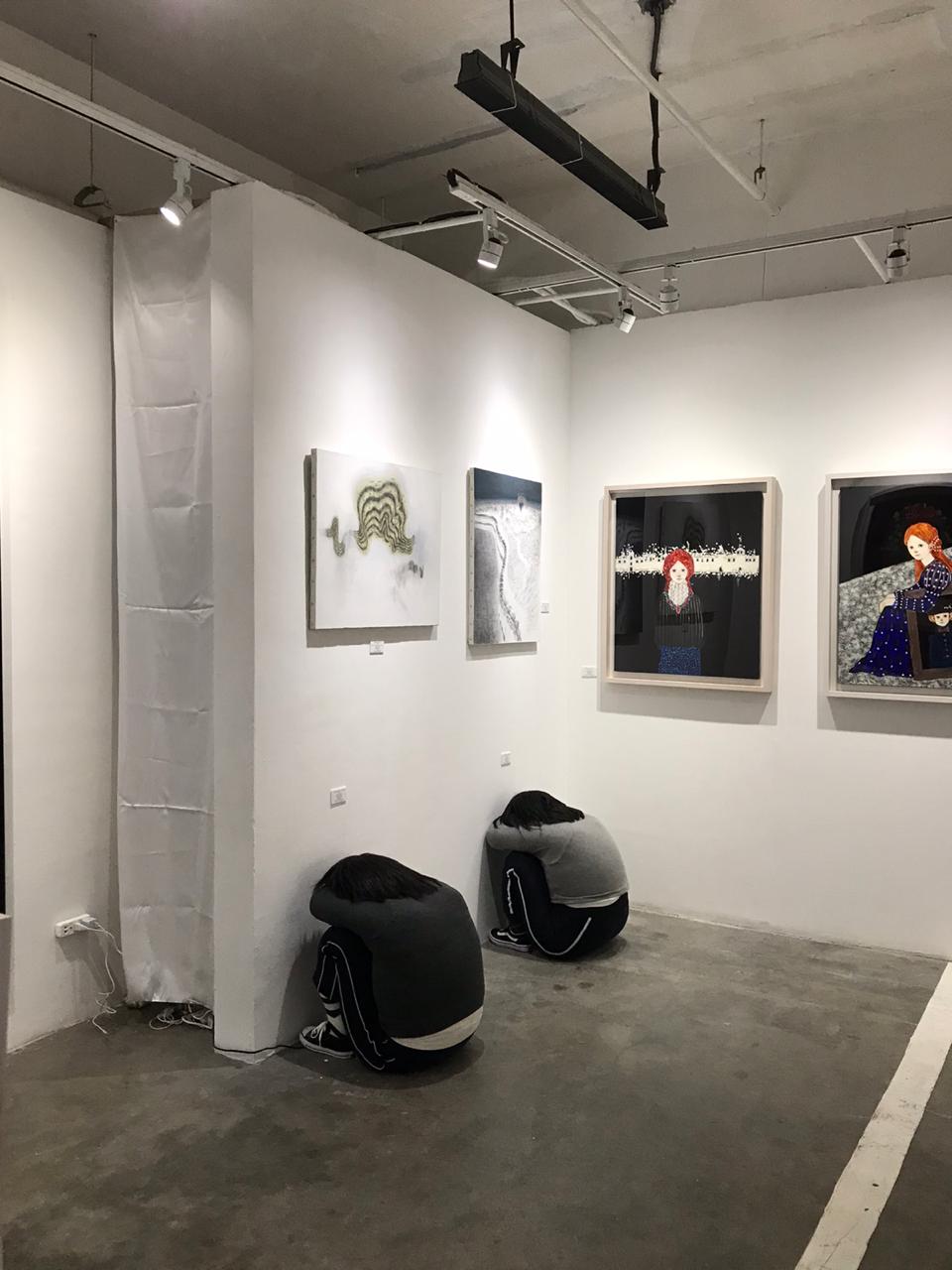I question everything. I question my existence all the time, whenever I can, wherever I can. It’s one of those quirky Aquarius traits I can’t shake off. Or I don’t know, it might be part of the whole 20-something quarter-life crisis.
So when I went to Art Fair this year, that’s what I set out to do. I may not have any money to buy pieces, but I do have eyes to observe people’s (possible) magnum opus. The only thing that’s left for folks like me to do is to ponder—and ponder I did.
As this year’s Art Fair opens its doors to the public, here is a go-to guide on which exhibits are ideal places to have an existential crisis. PS: Bring tissues and try not to drown in your own ennui.
Go to a fetal position near Taiyo Kimura’s conceptual sculptures

Kimura’s sculptures are quite confusing. Are the children sad? Scared? Tired? It’s hard to tell. But so are my emotions at the moment. That happens a lot when you’re in the transition period of leaving teenage life behind for adulthood, a stage you barely know how to navigate.
In this Nola piece, they pondered whether the children were ducking for an earthquake drill or playing hide and seek. I, for one, ponder self-actualization. Is it a permanent state of being? Or is it just a fleeting feeling?
Space out near Gene Paul Martin’s vibrant yet grotesque paintings
Recall that Vigo the Carpathian scene at the criterion classic “Ghostbusters” (1984)? Standing near Martin’s paintings feels exactly like that. His pieces were mounted in a way to surround you, to engulf you within its frames. It’s like Dante’s “Inferno” on acid—and that’s everyday life for you.
I may not have any money to buy pieces, but I do have eyes to observe people’s (possible) magnum opus.
You’re too anxious about the choices you make all the time. Sometimes, you wish you can just spontaneously combust to avoid awkward situations. Life feels a lot like one awkward situation that will never end. And as you stand there, marveling at Martin’s work, you see that the triptych in front you are similar to snapshots of the chaos that is your everyday life.
Cry about gender inequality near Nikki Luna and Kiri Dalena’s installations
Look at your reflection as you take your snapshot in the mirror. “As long as there are many beautiful women, there will be more rape cases,” says the mirror. This text is straight out of the president’s mouth, as I recall.
I stare at myself longer. While doing so, I thought to myself: Why does every woman have that one story? That one story where we were groped, catcalled, stalked or a combo of the three. Stories like that are what binds every woman together. Conservatives or not, feminists or not. This is how men see us—and this is what my sex has to carry forever.
Have a mental debate on Filipino identity near Julie Luch and Tropical Futures’ exhibit
During my college years, our humanities class got heated when the topic of Ferdinand Marcos’ essay on the bayanihan spirit was raised. We tackled how this imagery is fabricated and how the onslaught of colonizers muddled our cultural identity. Until now, I still can’t answer what being a Filipino means apart from having no solid sense of identity.
Some people see Filipino identity like how Kris Ardena sees it—basahans, pasa load signs, chichiryas and all. Is it a form of admiration? Or is it trivializing middle-class life? My life, to be exact. I am not quite sure yet. But I guess that’s their Filipino identity. It’s just not mine.
Then, there is Luch’s sculptures. As I walked through her exhibit, I saw a woman in her best Filipiniana reading names of the Drug War victims. Her polarizing interpretation of Juan Luna’s “Spoliarium” stops me from moving. Her piece’s description asks: will everything eventually turn to nothing, or will there be grace? That’s what I ask myself every day. Maybe to constantly worry about our country is the true meaning of being Filipino.
Get tipsy near Jellyfish Kisses’ booth and realize your self-worth
Anton Belardo a.k.a. Jellyfish Kisses’ booth was a crowd favorite. But unlike others, it was my last stop of the fair. I was tired and weary from asking for free drinks. That’s when I stumbled upon the hues of hot pinks and cool blues. In hindsight, it was the Mad Hatter’s dream living room.
Their installation is called “Soft Punk S/S.” It acts as a fashion collection of fabrics carrying sentimental value, or at least, a specific memory to the artist. The audience can participate by sewing the last piece of “Soft Punk.” Too bad I didn’t participate.
In my over-fatigued, drunken state, I stared at the neon lights above the triptych painting. It reads: I don’t love you anymore. That can mean a lot of things to different people. For me, after talking to Anton, I feel like it’s about self-worth. I don’t love not loving myself anymore. I don’t love not loving me.
And that’s probably a good way to end an existential trip, while near rich art connoisseurs.
Correction: ‘Dear Activist, write a slogan for me’ is the work of Kiri Dalena originally installed at an exhibit in Ateneo during 2010. The piece in the second entry is Gene Paul Martin’s. These have been corrected.
Where do you like to get lost in your thoughts at Art Fair? @ us @scoutmagph.